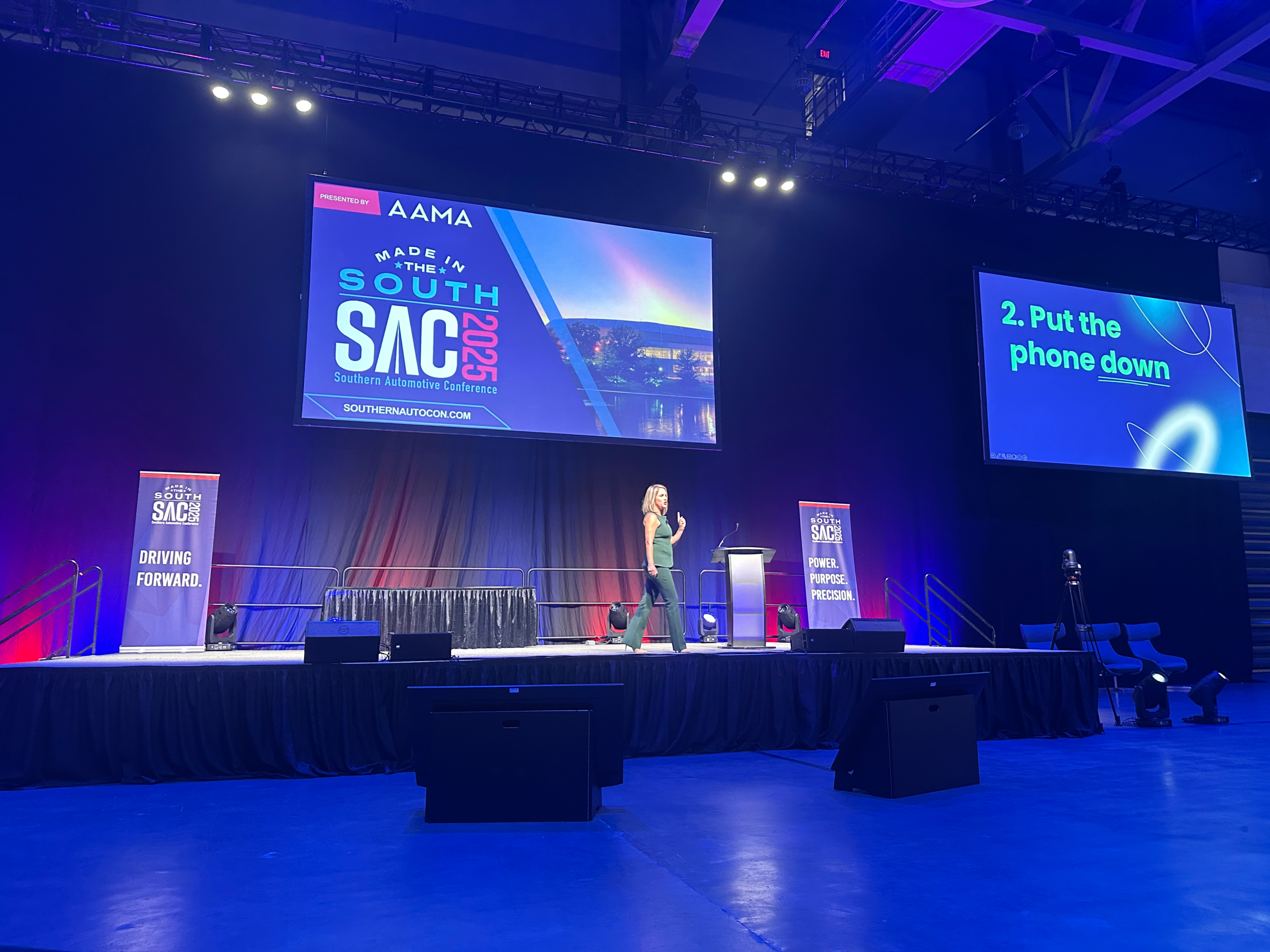Highlights from Mary Ila Ward’s keynote at the 2025 Southern Automotive Conference
At the 2025 Southern Automotive Conference, our very own Mary Ila Ward took the stage to explore a question that’s top of mind for every business leader today: How do we drive workforce excellence in a world that’s changing faster than ever?
Drawing from more than 20 years of experience in workforce strategy, Mary Ila shared an engaging, thought-provoking keynote that connected history, data, and humanity to the future of work, especially in the automotive and manufacturing sectors that keep the South moving.
Where We’ve Been
Mary Ila began by taking the audience back to 1926, when Henry Ford introduced the 40-hour, five-day workweek—a radical change that reshaped the modern workplace. Nearly a century later, she challenged the crowd to consider whether that model still works in today’s “always-on” digital world.
“We’re living with a 24/7/365 mindset,” she noted, “and it’s taking a toll on our health, relationships, and overall performance.”
From there, she painted a picture of the societal shifts shaping our current reality (all of which she’s talked about before on The Point Blog): the decline of play-based childhood and the rise of phone-based childhood, falling birth rates, fewer working-age males, and shifting immigration patterns. “We simply aren’t replacing ourselves,” she said, in a wake-up call for industries already struggling to find and keep skilled workers.
Where We Are
The current landscape, as Mary Ila described it, demands both individual and organizational adaptability. Excellence starts with small, intentional habits, like these “three small habits” for personal excellence as described on The Mel Robbins Podcast:
-
Move. Physical activity boosts focus, health, and resilience.
-
Put the phone down. Disconnection fosters creativity, presence, and balance.
-
Build relationships. Genuine human connection drives collaboration and engagement.
Each of these habits was paired with a simple challenge, like doing daily push-ups, spending a set time “phoneless,” or writing gratitude notes, to illustrate how small shifts create lasting change.
Modeling Excellence for Others
Beyond personal habits, Mary Ila emphasized the responsibility leaders have to model excellence for their teams. That starts with living in alignment with one’s values and setting clear boundaries between work and personal life.
“Don’t make people work outside of work hours, and don’t do it yourself,” she urged.
She also encouraged leaders to have regular one-on-one meetings with their direct reports and to focus less on solving problems and more on developing people. Recommending our friends at Mind Your Culture and the Integrity Coaching® framework, she outlined a leadership approach built on recognition, trust, and accountability. “We develop excellence by helping others find their own,” she said.
Where We’re Going
Looking ahead, Mary Ila challenged organizations to expand the labor pool and rethink traditional work models. Solutions she highlighted included:
-
Considering the “Success Sequence” as one path to help more men enter and stay in the workforce.
-
Improving childcare availability, affordability, and access.
-
Supporting immigration reform that bolsters the labor force.
-
Investing in second chance programs (like Onin Flex) to reengage people returning to work.
-
Rethinking shift structures and flexible work arrangements to meet modern expectations.
“Our workplaces need a paradigm shift,” she said. “Just like Henry Ford changed the model 100 years ago, it’s time for us to do the same.”
Moving Forward
Mary Ila closed her keynote with an invitation to lead differently, by starting small, focusing on people, and building communities of excellence across departments, organizations, and industries.
The message resonated with attendees who left inspired to take practical steps toward stronger, healthier, more human-centered workplaces.
Because as Mary Ila reminded the audience, “Driving workforce excellence starts with driving personal excellence—together.”





